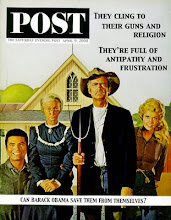 No, this Civil War-era powder monkey is a little before my time. He's a kindred spirit nonetheless. My time burning black powder began at age 15 when I tore the Christmas wrappings off an EMF box containing a replica 1851 Colt Navy .36 cal percussion revolver. Like most farm kids, I started shooting sometime before I started school. But other than knowing the engraved cylinder had to be charged from the front, I was faced with a mystery.
No, this Civil War-era powder monkey is a little before my time. He's a kindred spirit nonetheless. My time burning black powder began at age 15 when I tore the Christmas wrappings off an EMF box containing a replica 1851 Colt Navy .36 cal percussion revolver. Like most farm kids, I started shooting sometime before I started school. But other than knowing the engraved cylinder had to be charged from the front, I was faced with a mystery.Now, every firearm has multiple messages stamped on it, tied to it and enclosed with it. This box contained the revolver, wrapped in an oily plastic bag, and an oil-spotted warranty card. A few days later, my father brought me a copy of original instructions Colt enclosed with the 1851 Navy. A machinist Dad worked with copied them. Dad's co-worker threw in a plastic bag of pointed, pure lead, conical bullets that matched the original Colt profile.
No one in my rural community knew anything about black powder. The local library wasn't much help. The few shooting and gun magazines available then focused on modern firearms. I received the most help from my Uncle Gene, who lived in suburban Kansas City. He also pointed me to The Bullet Hole, at that time the world's largest indoor range, owned and operated by the Hodgdon Powder Company. The Bullet Hole, which is still in business despite being sold by the Hodgdon family in 1982, also houses a gun store.
The Hodgdons had recently introduced Pyrodex. My Dad took me to The Bullet Hole one snowy February day. Uncle Gene told me I could get Pyrodex, No. 11 percussion caps, and other accessories there. I wanted to be authentic and burn real black powder, but that revolver still was sitting unfired in a box. I found caps, a powder flask, a leather holster, an aluminum Lee conical bullet mold and Speer .375 round balls.
There was no Pyrodex. The salesman explained the Pyrodex plant had blown up Jan. 27, 1977, taking the lifes of four men including Dan Pawlak, co-inventor of the black powder substitute. He added the store had black powder in stock. He fished a can of FFFg out of a red magazine. I forked over all my money and a little of Dad's. Finally I was set.
As soon as we finished the hour-long drive, I popped six caps on all the nipples to clean out any oil. I charged the revolver for the first time in the lee of the garage out of the cutting north wind. I used Crisco liberated from Mom's kitchen to seal the chambers. At last I put on the caps and lowered the hammer between two chambers.
It was an afternoon I'll never forget. The blue smoke and flame, prying stubborn caps off nipples, fishing cap particles out of the frame and hammer gap, the rotten-egg smell of burnt black powder, black and greasy fingers, powder grains blowing back into my eyes, and the unrelenting wind and cold--it was the first of many great shooting sessions with that revolver.
I still have it along with the holster, flask and mold I bought from the Hodgdons. The blue is almost gone, the grips are dinged, the rifling is worn, and the silver plate is completely gone from the brass backstrap and trigger guard. I'm hanging onto that old iron until death parts us. I can't say that about most of my finer, up-to-date firearms.

The 1851 Colt Navy, the revolver Elmer Keith cut his teeth on, was my portal into the shooting sports.

1 comment:
THAT is a keeper.
Post a Comment